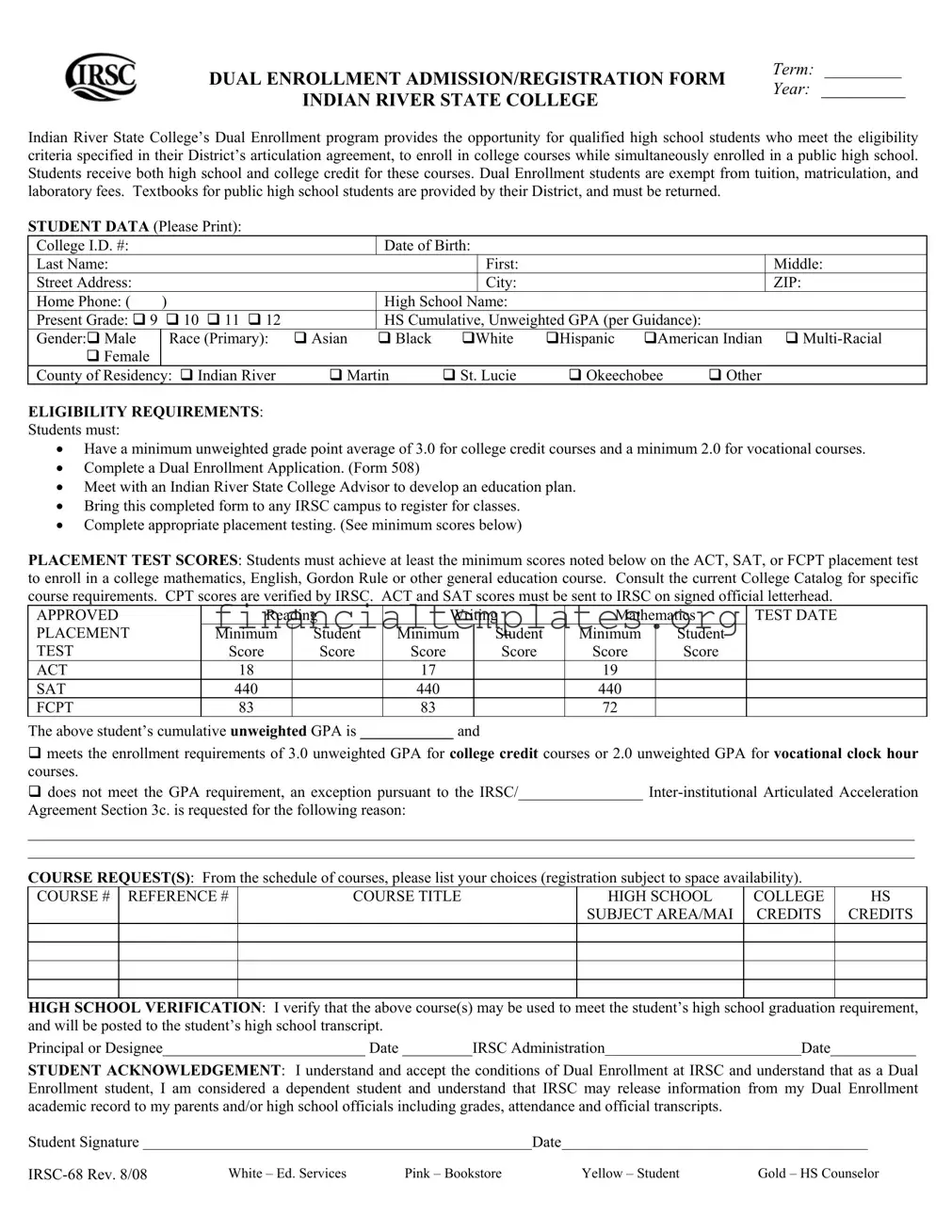The IRS Form 1098-T, known as the Tuition Statement, shares some common ground with the IRSC 68 form, primarily in the educational sector. Both forms are integral to the education process, with the 1098-T being used by colleges to report information about a student's tuition payments and potential eligibility for education-related tax credits. Similar to the IRSC 68, which facilitates enrollment and acknowledges the financial responsibilities covered and uncovered, the 1098-T form plays a key role in managing the financial aspects of a student's education.
The Common Application for college admission is another document that shares similarities with the IRSC 68 form. The Common Application is used by students to apply to multiple colleges and universities simultaneously. Both forms collect detailed personal and educational information from students to facilitate their admission into educational programs. However, while the Common Application places a broader focus on admissions to multiple institutions, the IRSC 68 targets dual enrollment at Indian River State College specifically.
The Free Application for Federal Student Aid (FAFSA) is closely related to the IRSC 68 form in its objective to support students’ educational endeavors. The FAFSA is essential for students seeking financial aid for post-secondary education, collecting personal and financial information to determine eligibility for federal, state, and institutional aid. Though the IRSC 68 primarily deals with dual enrollment, both it and the FAFSA remove financial barriers to education, with the IRSC 68 form notedly exempting dual enrollment students from certain fees.
The College-Level Examination Program (CLEP) Registration Form is utilized by students wanting to earn college credit by demonstrating proficiency in a subject area through examination. This form and the IRSC 68 are similar in their purpose of advancing a student’s college education. While the CLEP form focuses on testing out of courses, the IRSC 68 enables high school students to take college courses, both methods expedite the educational journey of a student.
The Advanced Placement (AP) Exam Registration sheet, used by high school students to sign up for AP exams, shares objectives with the IRSC 68 form. Both documents facilitate the process of earning college credits while still in high school. The IRSC 68 form does so through dual enrollment courses, whereas AP exams assess knowledge in specific subjects for potential college credit.
The National Collegiate Athletic Association (NCAA) Eligibility Center Registration is in place for high school athletes aspiring to compete in college sports. It requires students to provide personal, academic, and athletic information, similar to the data collection aspect of the IRSC 68. Both forms serve as gateways to post-secondary opportunities, with the NCAA focusing on athletics alongside academics, and the IRSC 68 emphasizing academic advancement through dual enrollment.
The Educational Opportunity Program (EOP) Application is designed to provide academic support and financial aid to students from historically underserved communities. Like the IRSC 68, the EOP Application collects comprehensive student information to facilitate access to higher education opportunities. Both are aimed at reducing barriers to college admission and success, though they target different student needs and resources.
The SAT and ACT Registration forms, necessary for college-bound high school students, align with the IRSC 68 in their focus on post-secondary education preparation. These standardized tests assess readiness for college-level work, while the IRSC 68 form enrolls students into actual college courses. Despite differing approaches, both the SAT/ACT registrations and the IRSC 68 form contribute to the academic progression of students.
The Vocational Rehabilitation (VR) Services Application assists individuals with disabilities in achieving employment and educational goals. It shares the IRSC 68's focus on educational advancement, albeit with additional support for overcoming disability-related barriers to success. While the VR Services Application offers a wide range of services for eligible individuals, the IRSC 68 specifically facilitates dual enrollment, both aiming to enhance educational opportunities.

